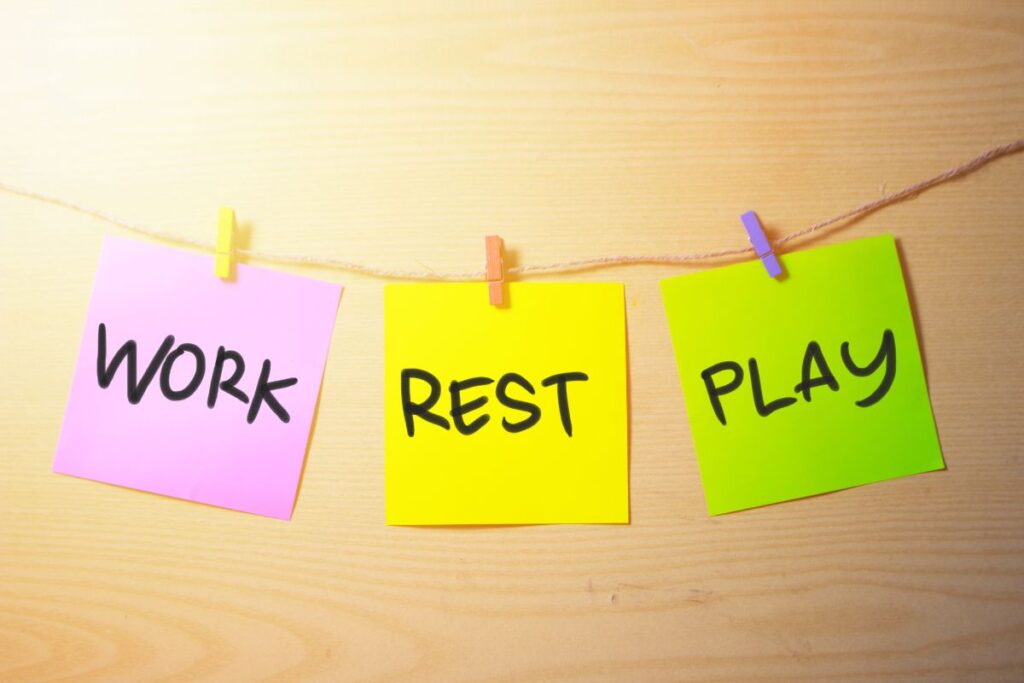
Creating a daily rhythm isn’t just about routines; it’s about being intentional with your family’s time. Picture your day with less chaos, where everyone knows what to expect and can focus on what matters most. For many of us, slowing down and finding this flow takes intentional steps and a sprinkle of patience. But the results? Worth every bit of effort. Let’s dive into some steps to create a rhythm that feels natural and nourishing for your family.
1. Reflect on Your Family’s Core Values
Before we jump into creating routines, let’s step back and ask: What truly matters to us as a family? This isn’t just about practical stuff like brushing teeth or making the bed; it’s about the values you want to live by each day. Is it family connection? Outdoor time? Learning together?
When we set our daily family rhythm with these values in mind, the day flows in a way that feels “right.” Make a quick list with your partner (or even with your kiddos, if they’re old enough to share). A few examples might be kindness, connection, or spending time in nature. Even just choosing two or three values can add clarity.
With your values defined, you’re in a better spot to create daily moments that reflect them. For example, if one of your values is connection, you might start each morning with 10 minutes of uninterrupted family time. Small but intentional habits grounded in your values make all the difference.
2. Map Out Anchor Points in the rhythm of Your Day
Now that you’ve got your values, it’s time to choose anchor points for your family rhythm. Anchor points are simple routines that act like bookends or touch-points throughout your day. Think mealtimes, morning wake-up, nap time, or evening wind-down.
When everyone knows that breakfast is at the same time every morning, it helps bring a sense of predictability. And predictability is what makes rhythm feel soothing, especially for kids. Look at your day and pick out 2-4 key points that happen every day, like breakfast, lunch, an afternoon snack, and bedtime.
After choosing your anchors, add little rituals around them. For instance, a breakfast blessing, a quick nature walk after lunch, or bedtime stories every night. These don’t have to be long, just intentional. Anchors help create a sense of time, making it easier for everyone to settle into the day.

3. Balance Work, Play, and Rest within your family rhythm
Creating a family rhythm that actually works means balancing active and restful times. With young kids especially, the rhythm of high-energy play balanced with restful activities (think: reading time, quiet play, or naps) helps maintain harmony.
Consider what your family’s natural energy flow looks like. Are mornings high-energy, or are they a slower start? Plan active times during those high-energy parts of the day and restful activities during low-energy times. For instance, mornings might be for play and movement, while after lunch can be dedicated to reading or rest.
A common issue here is over-scheduling. So, look out for signs of overwhelm or fatigue. When rest, play, and work are balanced, the day feels more relaxed. And everyone, from toddlers to teens, benefits from a family rhythm that respects their need to recharge.

4. Make Space for Connection. Reflect on your family rhythm
Finally, be sure to include time for connection with one another and for reflecting on the day. This can be as simple as talking about the day’s “highs and lows” around the dinner table, or having a family gratitude moment at bedtime. Creating this space encourages everyone to open up and listen to each other.
Having a daily rhythm also opens up moments to reflect on how the day felt. Were there parts of the day where things felt too rushed or too slow? Adjusting your rhythm is totally okay and necessary. Family rhythms aren’t about strict schedules; they’re flexible and grow with you.
Bonus Tip: Be Kind to Yourself!
Creating a family rhythm doesn’t happen overnight. It’s about making small changes that work for you, adjusting as you go, and letting things flow. Some days will go smoothly, and some days will be full of interruptions. That’s all part of the journey!
Would you like to add any specific family rituals or activities into your rhythm? Or are there specific times of the day you struggle with the most? Let’s work through it together and make a rhythm that truly feels right for your family!
Follow Up
Here are some more recent posts that take this even further:
How to Create Non-Negotiables to Build a Strong family rhythm